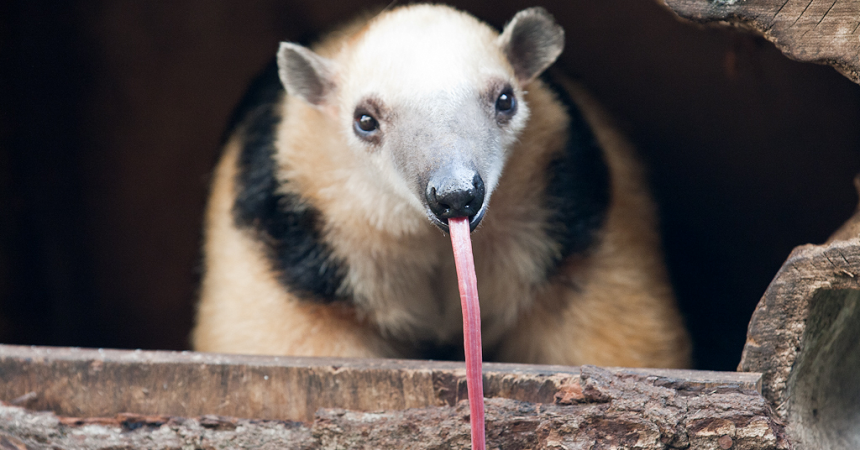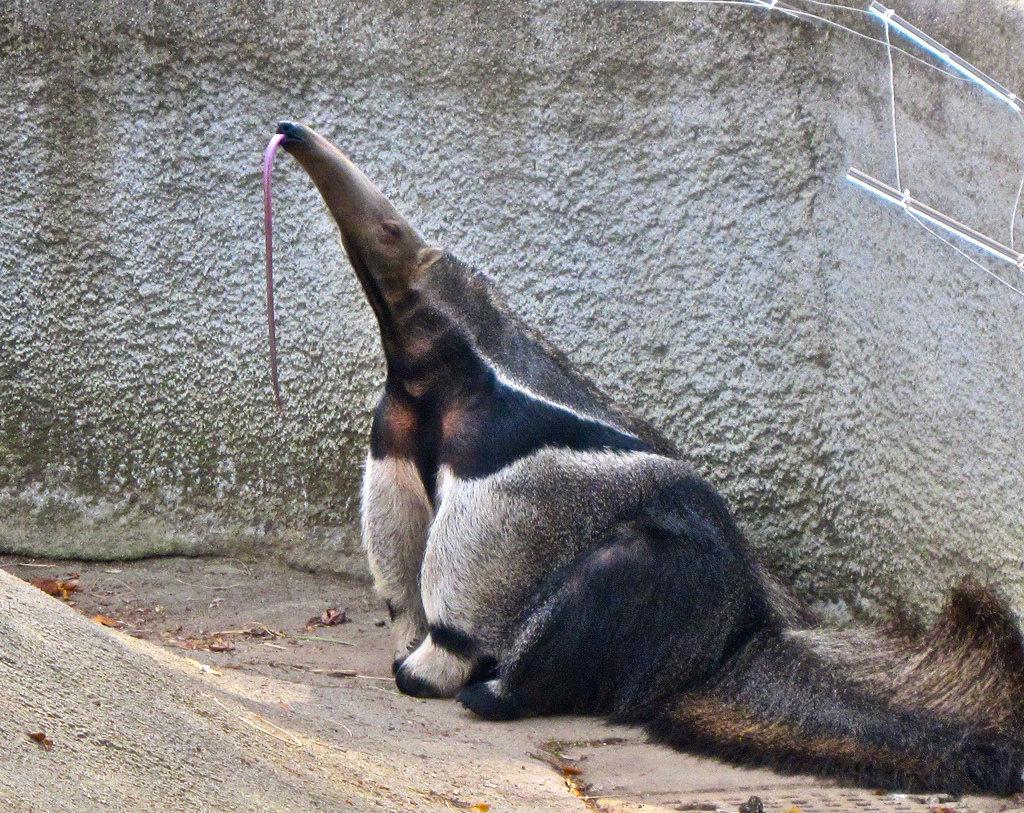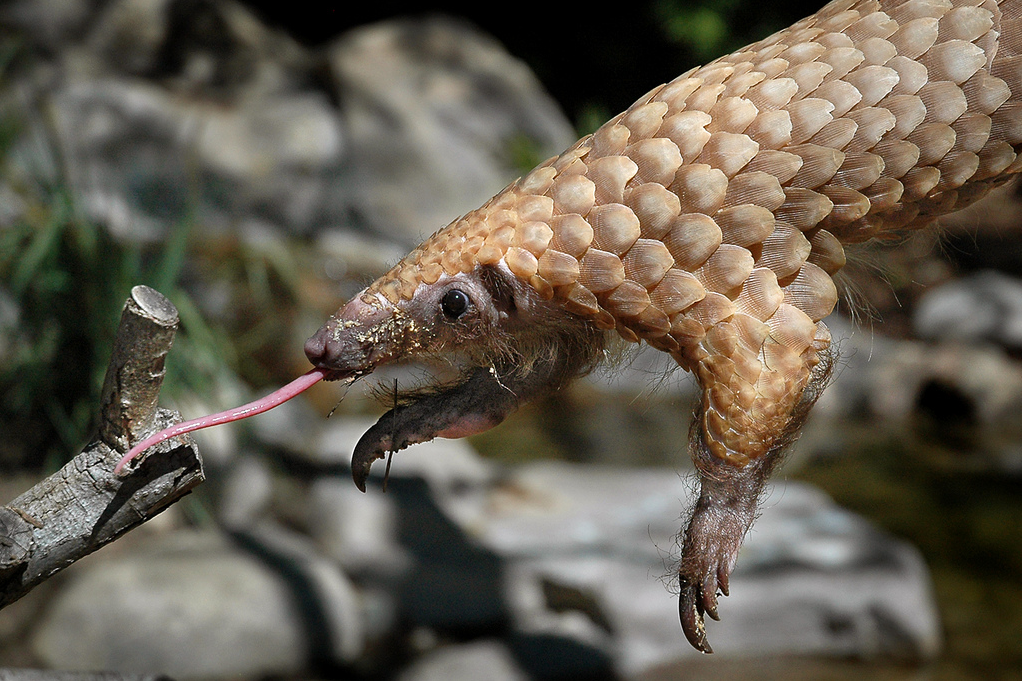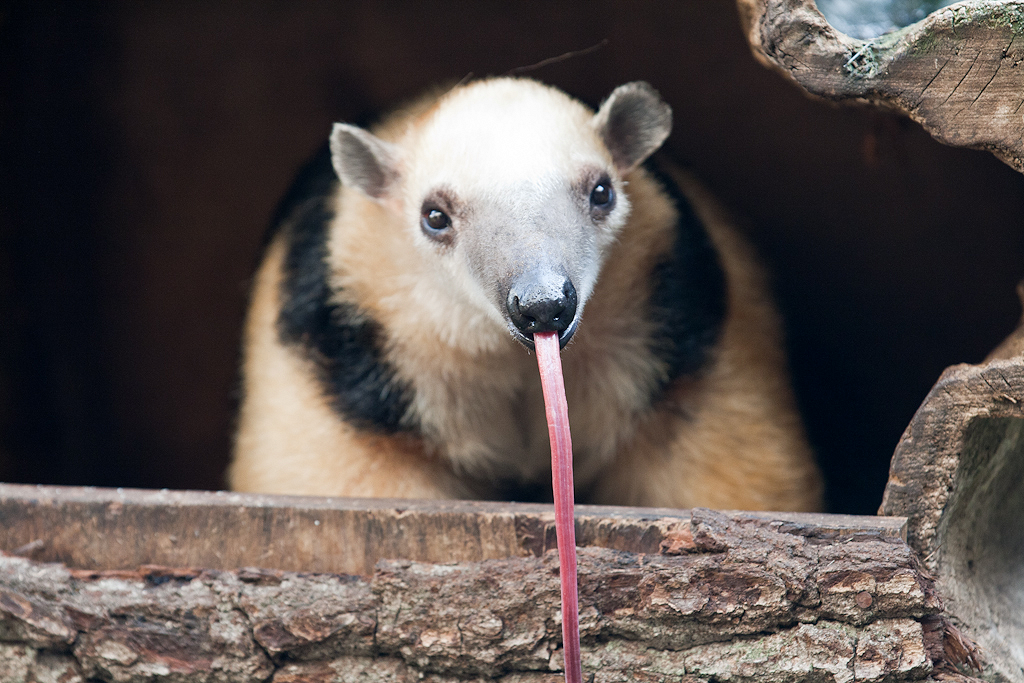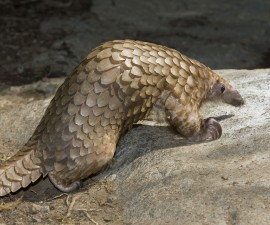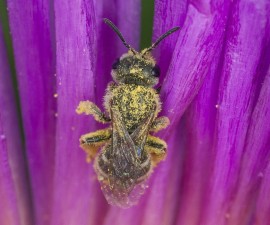tonng bingsenreFeatured image: Southern Tamandua by Sophie Patman
If you think some humans have long tongues (looking at you, Gene Simmons), the animal kingdom has us beat. Check out these extraordinary animals that put us to shame in the tongue department.
Giraffe
A giraffe’s tongue is a whopping 18 to 20 inches long to access hard-to-reach leaves. It’s also blue-black in color, which may keep the tongue from getting sunburned. Talk about a cool adaptation.
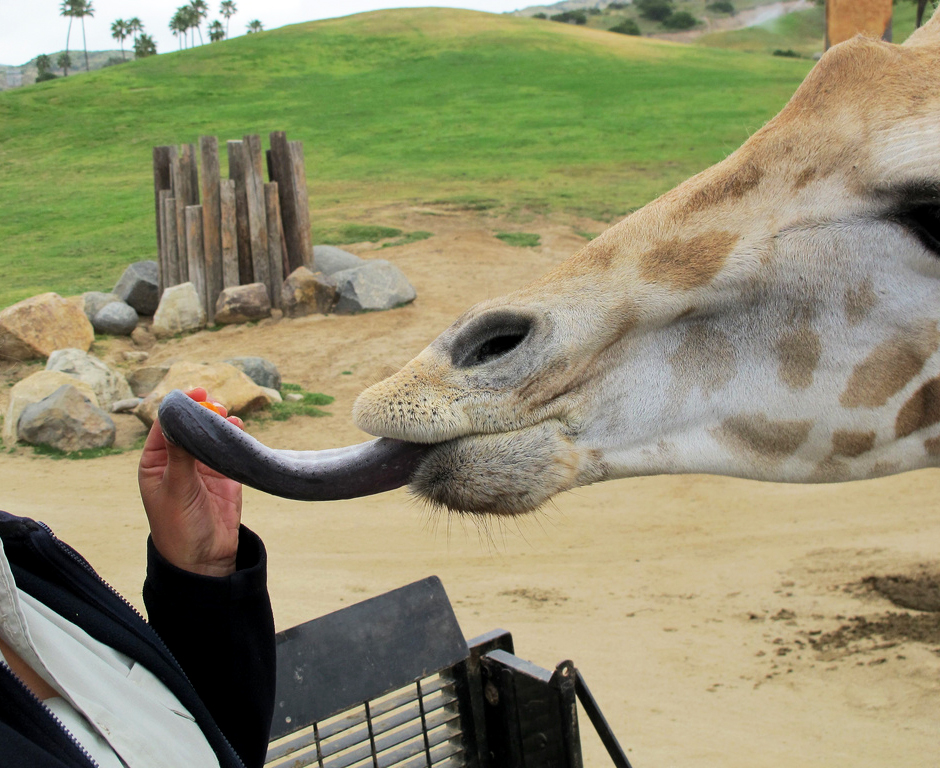
Okapi
The giraffe is the okapi’s closest relative, so naturally the okapi shares its relative’s leaf-reaching prowess. In fact, the okapi often uses its tongue to clean its eyes and nose.

Hummingbird
A hummingbird’s long, slender bill is adapted to collect nectar from flowers. The bill protects the long, split tongue and allows each hummingbird species to feed from specific types of flowers. The tongue actually has long tubes inside that help the hummingbird get its fill of nectar.
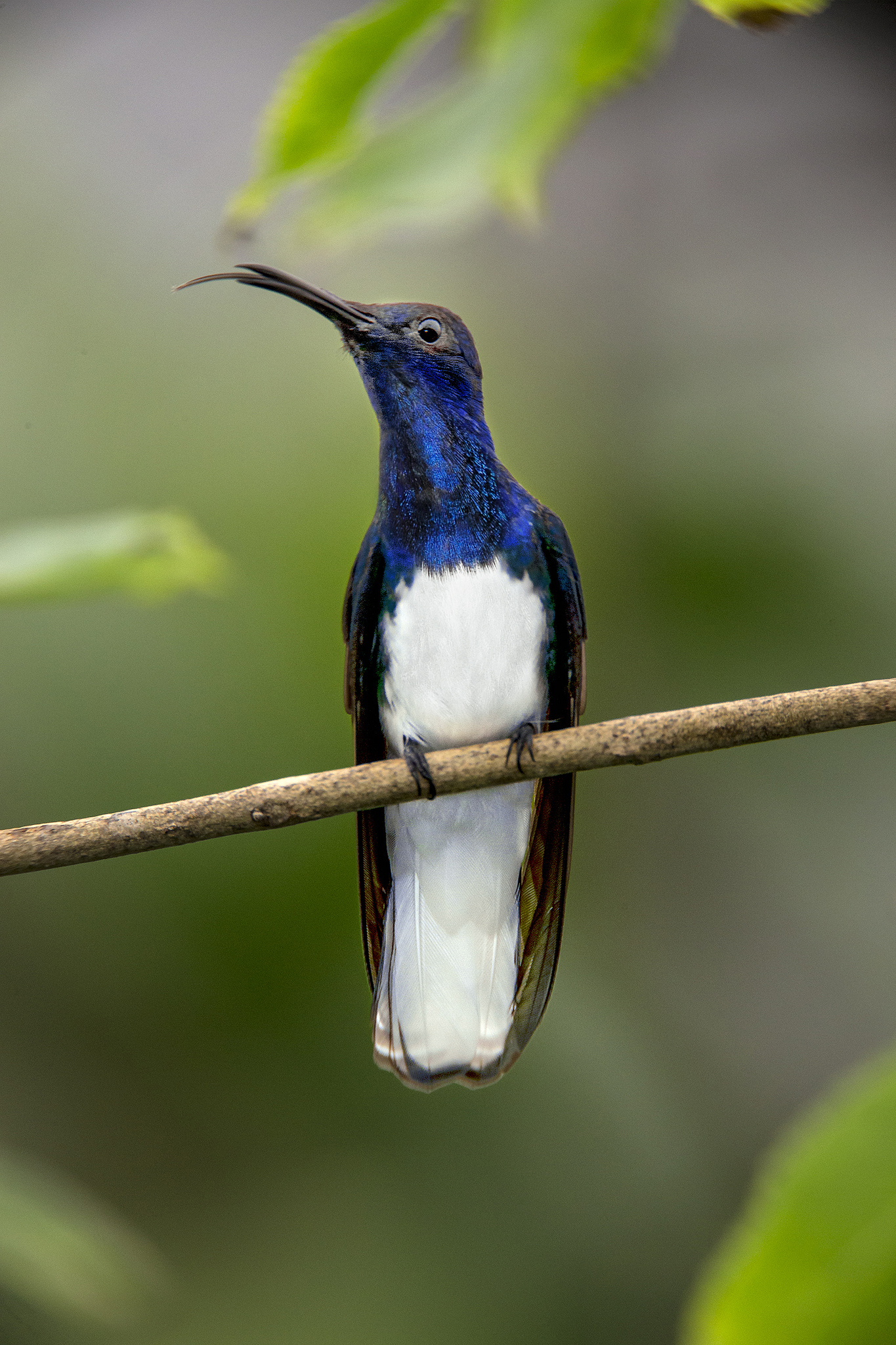
Sun Bear
The sun bear’s especially long tongue is perfectly suited for getting at honey and insects inside trees and other tight places. Its appetite for coconuts, oil palms, and other commercial crops has led to a lot of conflict between sun bears and humans. Sadly, this conflict is a significant conservation threat to the sun bear, as the little bears are often killed or confiscated for the pet trade.
Chameleon
Chameleons don’t move around very fast, so they use their incredibly long tongue to catch the insects they eat. They are able to stick the tongue out of their mouth very quickly. The end of the tongue is a ball of muscle, and as it hits its prey, it rapidly forms a small suction cup to pull insects back into the mouth to be crushed by its powerful jaws. In some species, the tongue is longer than the body!
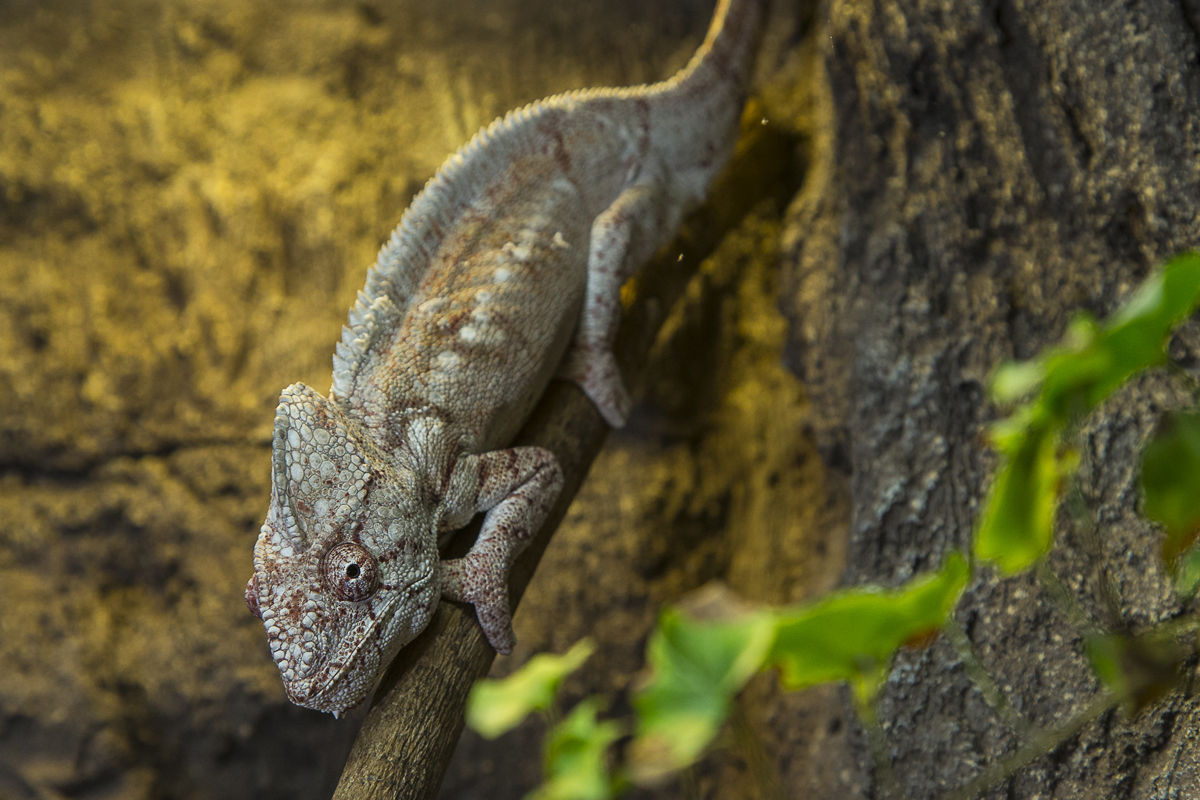
Anteater
Giant anteaters have no teeth, but a specialized tongue allows them to eat up to 30,000 ants and termites each day. These animals are perfectly designed to feed on these little critters, which is great, because ants are a very reliable food source. The anteater’s narrow tongue is about 2 feet (60 centimeters) long and is shaped like a strand of spaghetti. This amazing tongue has teeny, backward-pointing spines covered in sticky saliva that aid in feeding.
Pangolin
Termites and ants are the main menu items for the pangolin. It sniffs out an ant or termite nest, either in a tree or on the ground. Then, the pangolin uses its strong front legs and sharp front claws to rip it open. Its long, sticky tongue can then lick up the insects. The pangolin can close its ears and nostrils, and its thick eyelids protect the eyes from the angry ants.
Tamandua
A specialized mouth and tongue let tamanduas eat up to 9,000 ants in a single day! Tamanduas don’t have teeth to chew their food; instead, their stomach grinds the food after it is swallowed. A 16-inch-long sticky tongue with small barbs on it is just right for stealing ants and termites from their home. The tamandua’s mouth is only as round as a pencil, but it can also lick up honey and soft, juicy fruits.
Did we miss any other long-tongued animals? Let us know in the comments.
Matt Steele is senior social media planner for San Diego Zoo Global. Read his previous post, 11 Animals Who Realized They Left the Stove On.

